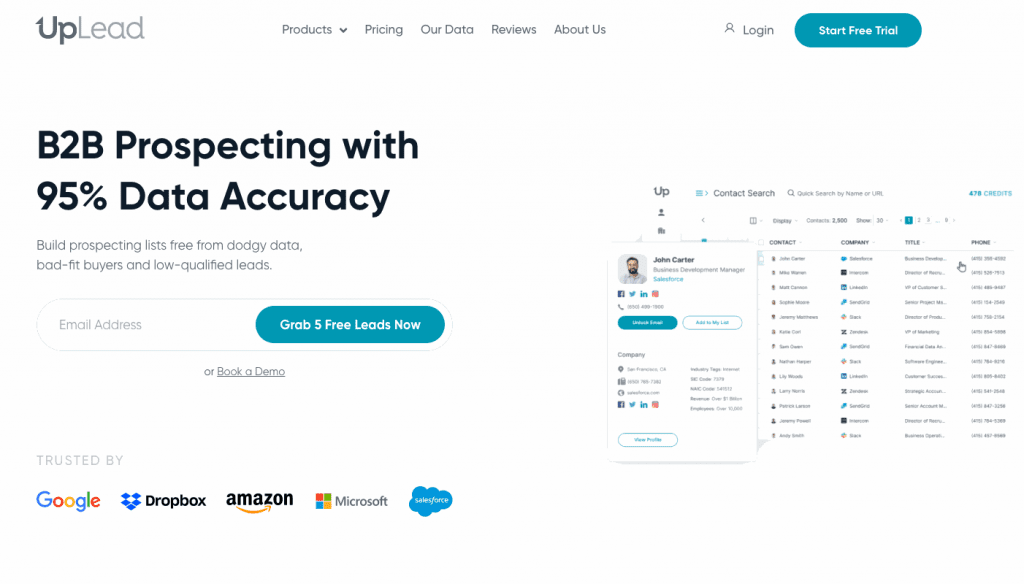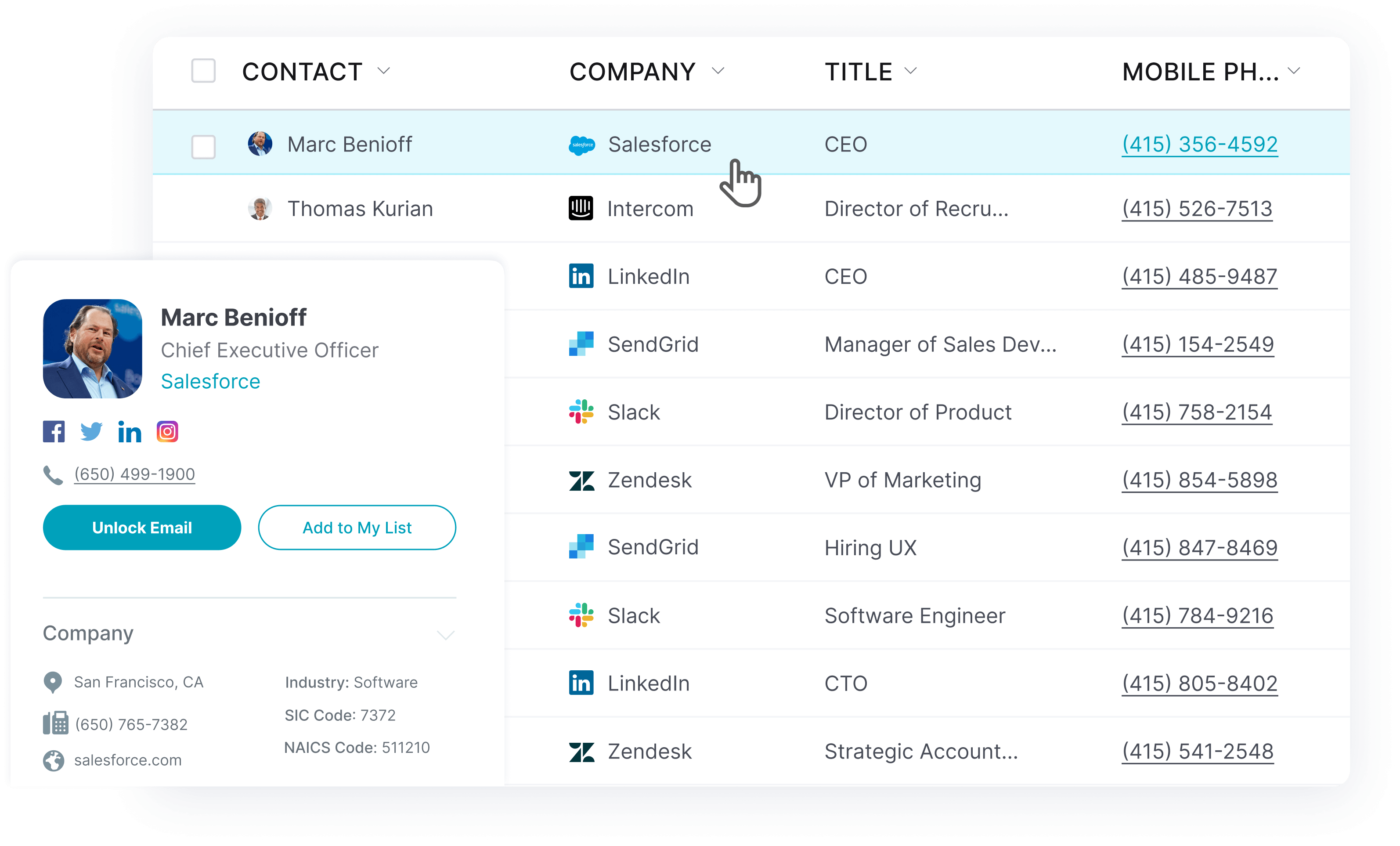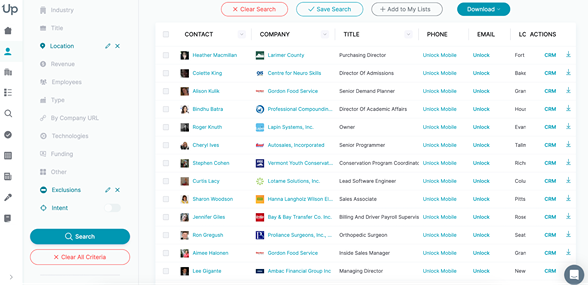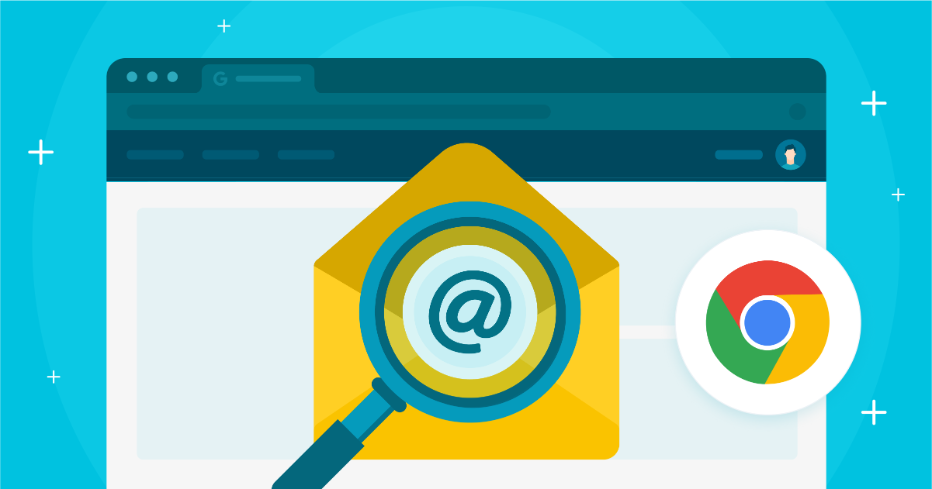Sales objections can be frustrating and intimidating, but they don’t have to be. Understanding the roots of sales objections can help your team develop the right responses and close more deals. This article outlines 27 of the most common sales objections. It provides strategies and pro tips on overcoming them and saving time and energy.
Hot tip: In a hurry? Find hot leads who are most likely to close. Use the intent data of UpLead. 🔥 Try it free here.
What are Sales Objections?
A sales objection can arise at any point in the sales cycle. Knowing how to handle a sales objection effectively is essential to your business’ success. Understanding each objection further is important rather than trying to overcome it superficially. You should identify how the objection relates to the buyer’s needs and reframe the conversation to address those needs. Developing this skill set can help sellers close more deals.
5 Types of Sales Objections
Sales reps encounter various types of objections from prospects. It’s essential to recognize these objections, understand why they occur, and identify strategies to overcome them. Here are five common types of objections that arise in the sales process.
1. Budget Constraints
The most frequent sales objections are related to budget constraints. Prospects may be unwilling or unable to spend the money required for your solution.
2. Lack of Need
Customers may not feel that they need your product or service. They may be unaware of its true value or be convinced that their current solution works well enough.
3. Bad Timing
Sometimes the timing doesn’t work out—prospective customers might feel like now isn’t the right time to make a purchase decision. This could be due to internal roadblocks. It could also involve external factors like changes in market conditions.
4. Business Related
Business-related objections are those arising out of a customer’s current situation. These objections can include a lack of resources or concerns about how a product or service fits within the business operations.
5. Competitor Focused
Competitor-focused objections are those involving a comparison between your product or service and those offered by another company. These objections typically arise when a customer has researched other options and is trying to determine the best product.
How to Master Objection Handling
In any B2B sales process, overcoming objections is vital to the customer pipeline. It’s crucial to master this skill if you want to be successful in sales. But how do you go about it? Below are some tips and strategies to help you become an objection-handling expert.
Understand the Situation
The first step to mastering the art of handling sales objections is understanding the situation. Put yourself in your customer’s shoes and try to think like them. What are their needs, wants, and concerns? What are their priorities? Being able to answer these questions will help you anticipate objections before they arise.
An effective way to gain insight into your customer’s needs is through sales intelligence tools such as UpLead. With company search features and access to high-quality sales leads, UpLead can give you all the material you need to understand your customers’ objectives better. You can be sure you’re getting up-to-date information—a 95% data accuracy guarantee backs their extensive database.
Ask Meaningful Questions
Once you understand your customer’s position, use meaningful questions to address their objections. This will show that you’re actively listening and that you want to get a deeper understanding of their needs. Asking questions also allows your customer to self-reflect; when prompted to consider the “why” behind their objection, they may realize that it isn’t an issue.
Have a Problem-Focused Solution
When it comes to objection handling, having a problem-focused solution is critical. Ask questions that prompt your customer to think about their challenges, then offer your product as a solution. This shows the customer that you’re actively engaged in the conversation. It also provides them with helpful insights into how they can use your product to solve their problems.
Confirm the Objection Has Been Handled
Once you’ve addressed the customer’s objection, confirming that it’s been handled before moving on to the next step in the sales funnel is essential. This ensures that all customer concerns have been addressed before closing the sale. Restate the highlights of your conversation or summarize what was discussed. Make clear that both parties are in agreement.
Use UpLead to Minimize Sales Objections

The modern sales landscape is complex and competitive, making connecting with the right prospects difficult. Using UpLead’s sales intelligence tools can make a big difference. With UpLead, you can easily find leads that match your target client profile. The platform offers a 95% data accuracy guarantee, so you can be sure you’re using reliable contact information. Sales objections arise less often when you have more targeted leads.





27 Most Common Sales Objections and How to Overcome Them
Your sales efforts don’t need to be an uphill battle. Equip yourself with the following tips for overcoming objections.
Common Price Objections
1. It’s too expensive
This highly common sales objection could arise at the beginning of your sales pitch or at the end when your customer is trying to negotiate a lower price. Recognize the customer’s concerns about costs, then highlight how much value your product brings. You can also calculate how much money your solution will save the customer over time. Be sure to tailor your response depending on the situation. Here’s an example of how you could respond to this type of objection: “I understand your concern about costs. Let me show you how our service can create significant long-term savings for our customers.”
2. It’s out of our budget
This objection may be another way of asking if you can lower the price. When handling this objection, being honest with your customer is important. Explain the reasoning behind your pricing structure and present your different payment options. For example, if you offer free shipping on orders over $500, suggest that the customer purchase more than one item to reach the discount threshold.
3. There are cheaper alternatives
Your customer might feel that the price of your product doesn’t coincide with its value or quality compared to the competition. Be prepared with information on why your product stands out from your lower-priced competitors. An effective rebuttal may include acknowledging each lower-priced alternative and then pointing out the unique features that make your product worth the additional cost.
4. I don’t want to be locked into a contract
Some prospects are afraid they’ll be tied to a service or product for an extended time period. To alleviate this concern, explain the potential client’s options within the contractual arrangement and offer the opportunity for renegotiation if the situation allows. For example, you could include language that allows for modifications of the contract’s length and terms at regular intervals. Customers will be more receptive to signing a contract with you if they feel you’re being transparent and reasonably flexible.
5. We won’t see ROI
This objection often arises when purchasing involves implementing a new system or changing existing processes. It’s best to present real-world examples from existing clients and explain exactly how those investments have paid off. Provide numbers to support your argument. Analyze the data necessary to show profitability before and after implementation. Here’s an example: “Our existing client reported an 8% increase in efficiency within three months of application launch.” Be sure to have verifiable evidence in hand.
Common Sales Objections Related to Competition
6. I’m under contract with someone else
Your customer may be reluctant to switch to a different provider out of loyalty or due to the hassle associated with transitioning. To counter this objection, you should fully understand the customer’s situation and explain why your product is still worth the switch. For example, you could lean on your offering’s superior features or emphasize how your team will work to ensure a smooth transition.
7. I’m happy with my current product
Sometimes customers don’t see why they should switch to a new product or service. To effectively overcome this objection, focus on how your product can alleviate specific pain points and explain how your product is of superior value. A simple rebuttal could be, “I understand you’re satisfied with your current product. However, we offer a feature/service to expand your business reach even further.” Then, offer an example that’s specific to the company. This demonstrates how upgrading or replacing their current product could yield even better results.
8. I did not like a similar product
This objection arises when a customer has already tried a similar product and was dissatisfied with the results. Emphasize the differences between the two products and demonstrate exactly how your product is better quality. An example response could be, “Yes, I understand why you wouldn’t want a similar product. But I can assure you that our product is very different. It offers (specific features) which can help you solve (specific pain points).” You can build trust by taking the time to understand exactly why a similar product didn’t work for them. Reassure the customer that your offering is an improvement from what they’ve seen in the past.
9. I’ve heard negative things about your company
This objection can be tricky. It’s important to acknowledge bad reviews and regret that previous customers had a negative experience. Explain succinctly the steps you’ve taken to improve, and emphasize that there’s no better time than now to purchase your solution. For example, you could reply, “We understand that we haven’t met some of our customer’s expectations in the past, which we deeply regret. We’ve taken practical steps over the past few months to create a more seamless and enjoyable experience for our customers, and we hope you’ll take this chance to see those improvements!”
Common Sales Objections Related to the Product
10. We don’t need your product right now
When customers say they don’t need the product, breaking through their initial hesitancy can be tricky. Acknowledge the hesitation by emphasizing that you understand where they are coming from. You could say, “I can understand your hesitation about purchasing today. However, here’s how taking action right now can result in even more improvements to your business over the long term.” Give examples related to the customer’s unique situation to help establish trust.
11. I don’t understand the product
People are unlikely to purchase a product if they don’t fully understand it. To handle this sales objection, ask the customer to clarify the unclear product elements. Once you’ve identified the sources of any confusion, you can address each concern. Avoid going too deep into technical details; explain what the features do and how they may benefit the customer. As an example response, you might say, “We know that busy professionals don’t always have time to keep up with changing technology. Let me explain exactly how this product can benefit your business.”
12. I’ve never heard of your company
An effective way to address this objection is to cite any awards or recognitions your company has received. You can also present testimonials from happy, long-standing customers. As an example rebuttal, you could say, “Our company has been recognized nationally on several occasions for excellent customer service. Here’s what our clients have said about our product.”
13. We need specific features you don’t have
It’s crucial that sales reps truly understand their customer’s pain points, challenges, and requirements before launching a sales pitch. It helps to break questions into three categories: understanding current challenges and frustrations with existing solutions, discovering which essential features would make a difference, and picking up on “wish list” items that could help you build an even better solution. If your product lacks a particular feature, share how an alternative solution might suit the customer’s needs.
Common Sales Objections Related to Business Operations
14. I need to ask my boss
This objection can arise when the person you’re speaking to doesn’t have the authority to make a purchase. It can also be a way to put off deciding if the customer isn’t convinced that your product is a good fit. Sales reps should learn how to respond professionally while ensuring they have the information needed to move forward. For example: “I understand certain approvals may be required. Could you tell me who you need to speak to and when they might have time to consider the offer?”
15. I don’t have the authority to make this decision
The customer may not want to commit to a purchase without input from others. Express your understanding and offer to meet with additional decision-makers to address any concerns. For example, “I completely understand why you’d like to get more opinions before committing. It’s an important decision! I’d be glad to provide more information or answer any questions you and your colleagues may have.”
16. I’ll discuss it with my team
When a customer says they wish to discuss the purchase with their team first, it’s likely that they’re interested in moving forward but need time to ensure that everyone is on board. To handle this sales objection, tell the customer it’s important that everyone is comfortable with the purchasing decision, and thank them for considering your service. For example, you could say, “I completely understand why taking the time to discuss things with your team is so important. Thank you for being so thorough when considering our proposal. When would you like to connect again so I can answer any questions that might come up?”
17. We’re being bought out/downsizing
If a company is being bought out or the business is downsizing, a prospect may hesitate to make a new purchase. In these cases, it’s important to empathize and stay focused on the opportunity at hand. Clearly articulate the value and potential cost savings associated with your solution. For example, “I understand this is difficult for your organization. We believe leveraging our products/services can bring significant benefits, especially now. Let me demonstrate exactly how our product can help reduce costs and streamline processes.”
18. We do not have the capacity for implementation
When responding to this objection, emphasize how much value your proposal brings and how easy the product or service is to implement. An example rebuttal might be, “Our solution is designed with easy implementation in mind. I’m certain our sales team can quickly onboard your staff and ensure you get the most out of it. We’re confident in our ability to work closely with your team and ensure successful implementation.”
19. This product isn’t compatible with our business
When prospects feel that your product isn’t compatible with their business, it’s essential to show the flexibility of your product and express a willingness to cater to different needs. Ask probing questions to understand their concerns and requirements better. An example response could be: “I understand the importance of ensuring a good fit for your business. Can you please tell me more about what you are looking for?” If you can identify specific needs or concerns, adjustments can be made to create a tailored solution that works best for the prospect.
20. This isn’t a priority right now
Customers may be focused on other goals and projects. They might not see any reason to make a purchase right now. In a case like this, explaining the advantages and benefits of acting sooner rather than later is essential. Explain why it’s important to act now. Present customer success stories of those who have taken advantage of early opportunities. For example, you could respond by saying, “I understand your time is valuable, and this isn’t an immediate priority, but if we act now, our product can give you an edge in the market while others are still trying to figure out their solutions.” Show how acting swiftly can lead to more positive results.
Common Sales Objections Related to Timing
21. We are too busy right now
This objection usually arises when the prospect engages in the customer journey but feels too busy to move forward. It helps to recognize this objection through active listening; show the client you can appreciate their situation. When you understand the challenges at hand, you can use a combination of problem-solving and relationship-building techniques to negotiate a possible solution. For instance, try to break down their objections into manageable tasks. This can help them understand that despite having too many commitments, they can still benefit from your product or service.
22. Call me back later
Customers sometimes use the objection “Call me back later” to delay making a decision. People put things off for another day, especially when busy; it is simply part of human nature. This objection is most likely to arise when considering a large purchase that will greatly impact the company. To overcome this sales objection, it’s best to explain why now is the best time to commit calmly. For example, you could say, “I understand you may have reservations; however, we’re offering a discount today for any purchase made before 6 pm.” If the customer insists you call back later, schedule a specific day and time to continue the conversation.
23. I need to think about it
To handle this sales objection, try reassuring the customer that you respect their reason for wanting more time. Remind them why you’re so confident that your product would benefit them, and be sure there aren’t any lingering questions. For example: “I understand your desire to reflect on our discussion. I’m confident our product will provide great value to your team. Do you have any questions that I can address at the moment?.”
24. Send me more information over email
When this objection comes up, it’s important to provide the most relevant and concise marketing materials based on where your prospect is in the sales process. Verify the prospect’s contact information so you can send the material quickly and securely. For example, you may respond by saying, “Absolutely! What’s the best email address I can use to send you some additional material?”
Common Sales Objections That Mean No
25. How did you get my information?
This question is usually asked when customers feel they have not permitted their contact details to be used or shared. Be transparent and explain that you’ve contacted them through a standard outreach process. For example, if your marketing strategy involves gathering contact details in exchange for gated material, explain how you obtained their contact information and remind them of the material they received. Your prospect will feel less intruded upon and be reminded of their previous interaction with your company.
26. I’m not interested
Even if someone has been through the process of exploring how your solution can alleviate their pain point, they might still be uninterested in making a purchase. This objection can be challenging, especially when both parties have invested time and effort into discussing the product. Staying focused on facts and values rather than emotion or opinion is important. Be sure to leave the door open for future sales. An example reply may be: “I understand this product isn’t what you’re looking for right now. We’ve enjoyed learning more about your company and hope you’ll consider doing business with us.”
27. The Dreaded Voicemail
If your prospect sends your calls to voicemail, the business relationship may stagnate. However, it could also be that your prospect is too busy to consider purchasing right now. Continue to display enthusiasm for your solution. For example, you could leave a voicemail requesting the customer’s opinion or ask if you could take a specific step to keep things moving. Regardless of whether or not you hear back, follow up with an email thanking them for their time. It demonstrates your commitment to developing a lasting relationship and will help keep you on your mind should the prospect decide to purchase.
What to Do When the Prospect Won’t Bite
It’s important to recognize when it’s time to move on. If you sense the prospect is unresponsive or uninterested or encounter an objection that cannot be overcome, it’s best to thank them for their time and politely withdraw. Emphasize how much you appreciate their consideration. Remind them that you’re willing to answer any questions that may come up in the future. For example: “Thank you for taking the time to speak with me today. If you have further questions or want to discuss this further, please reach out! I’m available at (contact info).” Doing this keeps a channel open for a future business relationship if the situation changes.
Overcoming Sales objections: Tips to Remember
Sales objections are a normal part of the sales process. They should be seen less as roadblocks and more as challenges to overcome. If you can anticipate and address customer objections, you can make your B2B sales strategy more efficient and effective. Below are helpful tips for overcoming sales objections and improving your success rate.
Offer an Immediate Resolution
The sooner you can answer a prospect’s question or solve their problem, the more likely you’ll be able to close the sale. Every business is different, so be prepared to offer alternatives and ensure there’s room for flexibility. Remember that customers want to feel heard and respected, so listen carefully before offering any solutions.
Do Extensive Background Research

Conducting extensive background research on the customer and their industry is essential. Knowing as much as possible about the customer will help you anticipate their needs and address any potential concerns before they come up in conversation. Understanding the prospect’s industry and business model will allow you to present tailored solutions.
Stick to a Plan
It’s best practice to stick with a plan or strategy that has been proven effective in similar situations. This could include anticipating common objections, having answers ready, and creating an elevator pitch or other persuasive tools for specific customer scenarios. A well-designed plan will help address each objection quickly without missing any key points.
Use Social Proof and Testimonials
Social proof or testimonials from existing customers is another excellent way to overcome objections. Show potential customers how your solution helped previous buyers. These testimonials can also act as powerful marketing tools. They demonstrate your product’s effectiveness while simultaneously building trust with potential buyers. Many people are wary of making a large purchase without getting feedback from real people who’ve used the product before.
What You Need to Remember About Sales Objections
Your sales team should know their target customers’ most common objections. Being knowledgeable and prepared to address potential questions or hesitations from potential customers will help your team close more deals.
With UpLead’s advanced sales tools, you can better understand your current and potential customer base. This will help you anticipate objections and devise an effective plan to overcome them.
To make your efforts even more effective, consider leveraging a quality data provider like UpLead, which has millions of verified B2B leads from different industries worldwide. This will help you shorten your sales process and boost your prospecting efforts.
Find hot leads searching for a service like yours right now. Use the intent data of UpLead. 🔥 Try it free here.









